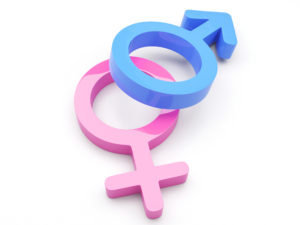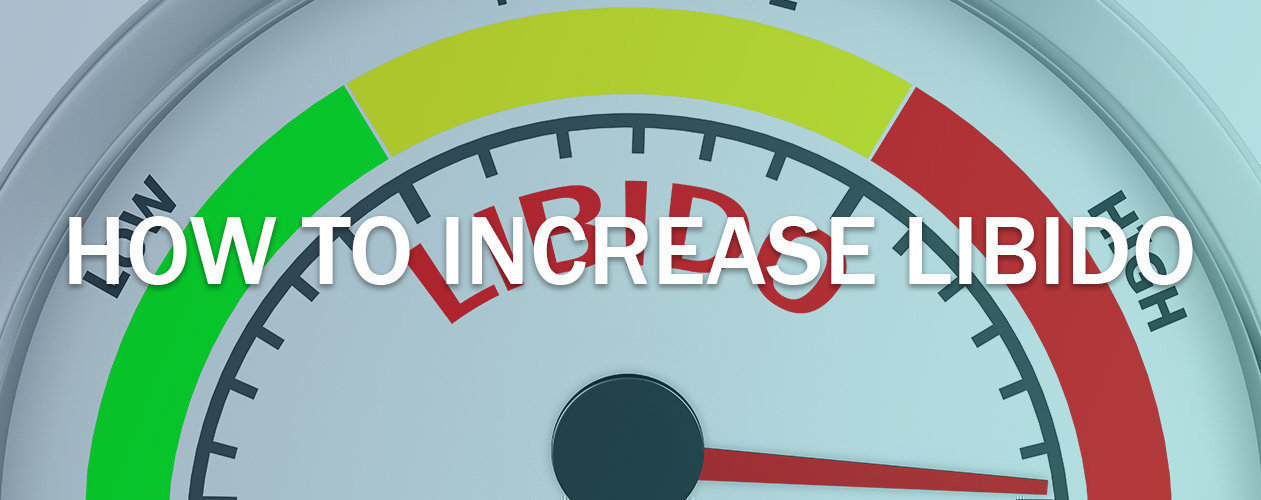How To Increase Libido?
How accurate is the self-assessment of loss of libido?
Interoception is an individual’s ability to recognise internal physiological states like heart rate or respiratory rate. It has been speculated that the sex difference in sexual concordance may be due to a sex difference in overall interoceptive ability, such that the same processes that contribute towards awareness of physiological signs in the body may also contribute to the awareness of signs of sexual arousal.
Sexual concordance is defined as the association between genital response and self-reported sexual arousal.
In the article by Julia Velten et al., it is said that men are generally more accurate than women at detecting their own heart rate, blood pressure, and stomach contractions. This sex difference has been hypothesized to be due to a sex difference in emotional processing: in laboratory settings, men’s interoceptive abilities seems to be dependent on internal cues, whereas women’s interoceptive abilities are more reliant on external cues.
With that, a few studies have sought to explore the relationship between interoceptive awareness and sexual arousal concordance. Julia Velten et al. found in their review that in several studies, it was established that whilst men showed higher concordance for genital response and heart rate than women, there was no association between sexual concordance and heart rate or respiration rate concordance.
This then begs the question: do the lower levels of concordance for genital response and heart rate in women affect women’s perception of their lack of sex drive as low awareness of physical sensations may be linked to low sexual desire in women?
Furthermore, women with greater interoceptive awareness related to the noticing, emotional awareness, self-regulation, body listening, and trusting domains may be more prone to paying attention to all sensations in the body which may detract from noticing the specifically sexual sensations.

Evidence from clinical trials
Review of study by Sandra Léa Bonfim Reis and Carmita H. N. Abdo
In the study by Sandra Léa Bonfim Reis and Carmita H. N. Abdo published in Scielo Clinics, they found that the correlation between testosterone and the female libido was first reported by Loeser (in 1940) and was subsequently confirmed by Greenblatt et al. (in 1942) and Salmon et al. (in 1943).
However, sexual response is multifactorial and depends on psychological and social aspects; on the effects of hormones such as oestrogen, prolactin, progesterone, and oxytocin; and on the effects of neurotransmitters and neuropeptides, including nitric oxide, dopamine, serotonin, and gamma-aminobutyric acid.
Sandra Léa Bonfim Reis and Carmita H. N. found the study by Dennerstein et al. correlated sexual behaviour and low androgen production in ageing women, concluding that the decline in androgen production coincides with decreased sexual motivation and fantasies. They also stated that in ageing individuals, sexual behaviour does not depend solely on androgen levels. In addition to experiencing the end of the ovarian function, menopausal women undergo physiological changes involving hormones and general health. Depression, relationship changes or partner loss, religious issues, and anxiety about the future are also important. All these elements are interconnected, and social and emotional factors directly affect the somatic factors. Fluctuations in oestrogen levels in perimenopausal women can precipitate vasomotor symptoms, sleep disturbances, and mastalgia, all of which impair the female sexual response. The decline in serum oestrogen levels after menopause results in vaginal mucosal atrophy, vaginal muscle atrophy, and reduced vaginal acidity, which culminate in dyspareunia and can impair female sexual desire.
Sandra Léa Bonfim Reis and Carmita H. N. concluded their study on the basis of their analysis of 20 randomized, placebo-controlled trials, that showed that the male hormone testosterone has a positive effect on sexual response in women, as it had been reported to increase pleasure from masturbation, sexual desire, the frequency of sexual activity, sexual satisfaction, and orgasm. Their findings are consistent with those of other studies they reviewed that showed increases in sexual desire, the frequency of sexual activity, and sexual satisfaction in women receiving androgen therapy.
They also found that testosterone was found to have beneficial effects on libido regardless of the route of administration (oral administration, transdermal administration, or implants). However, in the studies they reviewed comparing two different doses of transdermal testosterone (i.e., 150 microgram mcg and 300 mcg) in terms of their efficacy, testosterone was reported to have a beneficial effect on sexual response only when a 300-µg dose was used. Furthermore, masculinization was found to be rare and is due to the administration of high doses of androgens. Implants containing up to 300 mcg per day of testosterone initially produce supraphysiological blood peaks, although these are transient and do not induce virilization.
It should also be noted that whilst the evidence shows that androgen administration positively affects the female sexual response, the impact that the long-term administration of androgens has on the physical health of women has yet to be clarified.
Review of study by Michael Schulster et al.
In the study by Michael Schulster et al., published in the Asian Journal of Andrology, it was stated that in men with reduced testosterone levels, the administration of exogenous oestradiol had shown an increased libido. The study further claimed that in a unique case report of a male patient with aromatase deficiency and hypogonadism, both oestrogen and testosterone were required to increase libido, whereas neither hormone could achieve the effect alone. This suggests that oestrogen plays a key role in sexual desire in the presence of low testosterone.
Whilst oestradiol has been shown to have a positive effect on libido in the presence of low levels of testosterone, there have been a limited number of studies that investigated the effect of oestradiol supplementation in eugonadal men. Even at that, the results reported have been conflicting. For instance, in one study reviewed by Michael Schulster et al. where there was continuous oestradiol administration in men who had normal testosterone levels, the results showed decreases in sexual interest, fantasy, masturbation, and erections. On the other hand, a randomized, double-blind study conducted on 50 men ages between 20 and 40 years showed that sexual activity was unaffected.
In men with secondary hypogonadism (functioning testes and relatively low levels of luteinizing hormone [LH] and testosterone), clomiphene citrate has been used to increase testosterone levels by acting centrally on the oestrogen receptors (OR) weakly. Clomiphene citrate administration raised endogenous testosterone while increasing the testosterone to oestradiol (T/O) ratio. In a later study reviewed by Michael Schulster et al., clomiphene citrate administered to hypogonadal men produced an increase in libido, energy, and sense of well-being.
Michael Schulster et al. also reviewed the study by Finkelstein et al. that looked at the effects of testosterone and oestrogen on male sexual function and found that the administration of testosterone with and without aromatase inhibitors markedly impaired sexual function when aromatisation was inhibited.
In addition, when patients with low levels of testosterone were treated with letrozole, a potent aromatase inhibitor, libido was decreased. This suggests that complete elimination of oestradiol and decreasing the T/O ratio too severely, adversely affects sexual desire in men.
These studies all provide evidence that both oestrogen and testosterone are necessary for normal libido in testosterone-deficient men.
Clinically, the dependence of libido in hypogonadal men on both testosterone and oestrogen indicates that a cautious approach to the use of aromatase inhibitors is warranted and that the T/O ratio has an impact. This is especially important as there are different outcomes when oestrogen is administered at low and normal testosterone levels.
Lastly, the effect of oestradiol on mood must be considered. This is because mood can correlate with sexual interest. Thus, it is reasonable to consider these data when discussing the role of oestradiol on libido. While cognition, well-being, and depressive symptoms improve in men whose low testosterone levels were corrected, higher oestrogen levels have also been associated with less depression in older patients of both sexes.
Review of study by Jesse Elliott et al.
In the study by Jesse Elliott et al. where they reviewed 14 randomised controlled trials RCTs (12 placebo-controlled, 2 active-controlled) involving 3167 patients (hypogonadal men given testosterone replacement therapy (TRT) for ≥3 months) randomised to 10 treatments investigated libido.
Compared with those that received the placebo, treatment with any TRT significantly improved libido.
In the network meta-analysis, most individual treatments significantly improved libido compared with placebo (6/10 treatments). Among the treatments, 1% gel (100 mg/day) was significantly better than the patch (5 mg/day). Oral testosterone undecanoate (TU) (160 mg/day), and oral TU (120 mg/day) was significantly better than patch (5 mg/day) and 1% gel (75 mg/day). Oral TU (160 mg/day) was significantly worse than most other TRTs in the network (8/9 TRTs).

Treatment options to increase libido
If you find your lack of sexual desire is causing you distress or it’s affecting your relationship, it’s a good idea to get help. You should consider speaking to your doctor initially or contacting your local sexual health clinic. Treatment options offered would depend on the cause of the lack of sexual desire.
You do not need to feel embarrassed about getting help. Lots of people experience problems with their sex drive and seeking advice can be the first step towards resolving the issue.
During your initial consultation, for instance, with your GP, you can expect to be listened to establish possible causes for your lack of libido.
New treatment initiated
If it is suspected that your loss of libido is as a result of underlying conditions like depression and erectile dysfunction, for instance, your doctor would review the need to put you on new medications to treat the condition(s).
Furthermore, if it was established that your loss of libido was as a result of alcohol consumption and/or illegal drug use, your doctor may signpost you to other service providers as appropriate.
Change in medicinal drugs
If it is suspected that any of the medications you are currently taking may be causing your symptoms, your doctor would review them to see if there are other suitable medications to put you on that are not likely to cause a loss of libido as a side effect.
Talking Therapy
Either through a referral by your GP or a private self-referral, a sex therapist will listen to you describe your problems and assess whether the cause of your loss of libido is likely to be psychological, physical or a combination of the two.
Talking about and exploring your experiences will help you get a better understanding of what is happening and the reasons behind it. The sex therapist may also give you exercises and tasks to do with your partner in your own time.
Each therapy session is completely confidential. Whilst you may see a sex therapist by yourself, if your problem affects your partner as well, it may be better for you both to attend. Sessions usually last for 30-50 minutes. The therapist may advise you to have weekly sessions or to see them less frequently, such as once a month.
Talking therapy is especially useful if you have problems in your relationship or you are stressed, anxious and/or exhausted.
Hormone Replacement Therapy
There are treatments to increase hormone levels if low levels of hormones are affecting one’s sex drive. These treatments include hormone replacement therapy (HRT) and can be used in both men and women (especially women going through the menopause).
HRT in men
Testosterone deficiency has well established negative effects on male sexuality and quality of life.
A common indication for testosterone therapy is the treatment of decreased sexual desire or erectile dysfunction. A systematic review undertaken by RYAN C. PETERING, MD, and NATHAN A. BROOKS, MD, MPH found 23 randomized trials of testosterone therapy’s effects on libido and 13 of those trials showed some benefit.
Testosterone supplements are mainly used in the treatment of hypogonadism, i.e., in males with very low levels of testosterone or no endogenous testosterone production. Appropriate use for hypogonadism is known as hormone replacement therapy (testosterone replacement therapy TRT) and aims to maintain serum testosterone levels in the normal range.
Due to its anabolic effects, TRT has also been used in many other conditions like infertility, lack of libido or erectile dysfunction, osteoporosis, and appetite stimulation. It is also used to stimulate penile enlargement and height growth, to promote bone marrow stimulation, and to reverse the effects of anaemia.
Very low doses of testosterone are used to treat female androgen insufficiency-associated symptoms like reduced libido, diminished wellbeing, and lowered mood or low energy state, in postmenopausal women. Women, who have had surgical menopause, have adrenal insufficiency or pituitary insufficiency, and those who experience premature ovarian failure, also have reduced androgen production and may undergo androgen replacement therapy, either with DHEA or testosterone.
HRT in women
Testosterone deficiency in women may be associated with problems with sexual function, mood, cognition, and body composition. A comprehensive meta-analysis of post-menopausal women found improvement in sexual function with testosterone therapy.
GSM
For women diagnosed with GSM, the aim of management and treatment is to provide symptom relief.
Management of a woman with sexual dysfunction, including loss of libido, dyspareunia due to vulvovaginal atrophy and pelvic floor tension, requires a more complex and multidisciplinary approach. The severity of the symptoms will determine the therapies required. Lubricants and moisturisers may be recommended initially for dryness and loss of lubrication with intercourse. Vaginal oestrogens are prescribed when severe atrophic changes are present. If there is pelvic floor dysfunction, pelvic pain or urinary symptoms, referral to a pelvic floor physiotherapist for pelvic floor training and relaxation will help to reduce symptoms. Sometimes, vaginal trainers will help dilate the vaginal introitus.
During the consultation, the doctor may use the opportunity to discuss lifestyle, diet and exercise, smoking cessation and appropriate alcohol consumption. Routine cervical screening and STI tests, if indicated may be performed too. There may also be an investigation of any postmenopausal bleeding to exclude gynaecological malignancy. A vaginal or vulval swab may be taken if there is vaginal discharge or vulvitis. This is to exclude infection. A vulval biopsy may also be necessary if the vulval findings are suspicious or do not respond to the recommended treatment. Urine investigations may be required if symptoms are related to bladder and urethra.
The exact type of treatment is dependent on the symptoms and signs, and the degree of severity. Non-hormonal therapies include personal lubricants, vaginal moisturisers and vaginal laser (long-term safety and efficacy have not been established).
Hormonal therapies include vaginal oestriol cream or pessaries, vaginal oestradiol tablets, or systemic hormone therapy (menopause hormone therapy [MHT]).
Lubricants and vaginal moisturisers are effective in relieving discomfort, friction and pain with penetrative sexual intercourse. Lubricants are used at the time of intercourse, whereas vaginal moisturisers provide longer-term relief. Lubricants can be water-based or silicone-based. Water-based lubricants are non-staining and have fewer side effects than silicone-based lubricants. Oils, such as olive or sweet almond oil, are alternatives.
Vaginal moisturisers rehydrate dry tissues by changing the fluid content in the vaginal epithelium, absorbing and adhering to it, mimicking vaginal secretions, and lowering the pH.
Oestrogen vaginal preparations reduce the symptoms of and reverse the atrophic changes in pelvic tissues and improve blood flow and the thickness of the epithelium in the vagina, bladder and urethra. There is minimal systemic absorption, after an initial peak, then almost no further absorption.
Vaginal oestriol preparations of cream and pessaries provide a human oestrogen. Oestriol is the weakest oestrogen and has one-tenth of the potency of oestradiol. There is minimal absorption systemically and oestriol cannot be metabolised to oestradiol or oestrone.
Low-dose vaginal oestradiol tablets are also very effective in relieving atrophic symptoms. Whilst there are no studies on the long-term risks of vaginal oestrogen preparations, absorption is negligible once the atrophic changes have been reversed. Added progestogens are not needed to prevent endometrial stimulation.

Mindfulness
Julia Velten et al. state that Mindfulness has arisen as a promising approach to improving women’s low sexual desire. By increasing women’s ability to attend to sexual stimuli, mindfulness may improve sexual function by directly increasing their sexual response. Sexual response is usually thought of as an emotion with subjective or experiential, physiological, and behavioural components.
Emotions, on the other hand, have been defined as a complex set of interactions which can:
- give rise to effective experiences such as feelings of arousal, pleasure/displeasure;
- generate cognitive processes;
- activate widespread physiological adjustments to the arousing conditions;
- lead to behaviour that is often, but not always, expressive, goal-directed, and adaptive
Mindfulness-based interventions are effective in treating sexual dysfunctions and include exercises that encourage participants to focus on body sensations in the present moment. Improving non-judgmental awareness of different bodily sensations (eg breathing) is one goal of mindfulness meditation.
As a consequence, mindfulness meditation may enhance women’s ability to notice all body sensations, not just sexual ones, and therefore lead to reduced sexual concordance.
References
All links were accessed on the 12 – 17th of December 2018
- https://www.nhs.uk/conditions/loss-of-libido/
- https://www.nhs.uk/conditions/ejaculation-problems/
- Title – Interoception and sexual response in women with low sexual desire
- Authors – Julia Velten, Data curation, Formal analysis, Writing – original draft, Writing – review & editing and Lori A. Brotto, Conceptualization, Data curation, Funding acquisition, Investigation, Methodology, Project administration, Resources, Writing – original draft, Writing – review & editing, Gilles van Luijtelaar, Editor
- Source – PLoS One. 2017; 12(10): e0185979. Published online 2017 Oct 11. doi: [10.1371/journal.pone.0185979]
- Link – https://www.ncbi.nlm.nih.gov/pmc/articles/PMC5636106/
- Title – The role of estradiol in male reproductive function
- Authors – Michael Schulster, Aaron M Bernie, and Ranjith Ramasamy
- Source – Asian J Androl. 2016 May-Jun; 18(3): 435–440. Published online 2016 Feb 23. doi: [10.4103/1008-682X.173932]
- Link – https://www.ncbi.nlm.nih.gov/pmc/articles/PMC4854098/
- Title – Testosterone therapy in hypogonadal men: a systematic review and network meta-analysis
- Authors – Jesse Elliott, Shannon E Kelly, Adam C Millar, Joan Peterson, Li Chen, Amy Johnston, Ahmed Kotb, Becky Skidmore, Zemin Bai, Muhammad Mamdani, and George A Wells
- Source – BMJ Open. 2017; 7(11): e015284. Published online 2017 Nov 16. doi: [10.1136/bmjopen-2016-015284]
- Link – https://www.ncbi.nlm.nih.gov/pmc/articles/PMC5701987/
- Title – Adverse Effects and Safety of 5-alpha Reductase Inhibitors (Finasteride, Dutasteride): A Systematic Review.
- Authors – Hirshburg JM, Kelsey PA, Therrien CA, Gavino AC, Reichenberg JS
- Source – J Clin Aesthet Dermatol. 2016 Jul;9(7):56-62. Epub 2016 Jul 1.
- Link – https://www.ncbi.nlm.nih.gov/pubmed/27672412
- Title – Genitourinary syndrome of menopause
- Authors – Elizabeth Farrell AM
- Source – Volume 46, No.7, 2017 Pages 481-484
- Link – https://www.racgp.org.au/afp/2017/july/genitourinary-syndrome-of-menopause/
- Title – Benefits and risks of testosterone treatment for hypoactive sexual desire disorder in women: a critical review of studies published in the decades preceding and succeeding the advent of phosphodiesterase type 5 inhibitors
- Authors – Sandra Léa Bonfim Reis and Carmita H. N. Abdo
- Source – Clinics (Sao Paulo). 2014 Apr; 69(4): 294–303. doi: [10.6061/clinics/2014(04)11]
- Link – https://www.ncbi.nlm.nih.gov/pmc/articles/PMC3971358/
- Title – Reactive oxygen species: players in the cardiovascular effects of testosterone
- Authors – Rita C. Tostes, corresponding author, Fernando S. Carneiro, Maria Helena C. Carvalho, and Jane F. Reckelhoff
Source – Am J Physiol Regul Integr Comp Physiol. 2016 Jan 1; 310(1): R1–R14. Published online 2015 Nov 4. doi: [10.1152/ajpregu.00392.2014] - Link – https://www.ncbi.nlm.nih.gov/pmc/articles/PMC4796634/
- Authors – Rita C. Tostes, corresponding author, Fernando S. Carneiro, Maria Helena C. Carvalho, and Jane F. Reckelhoff
- Title – Testosterone Therapy: Review of Clinical Applications
- Authors – RYAN C. PETERING, MD, and NATHAN A. BROOKS, MD, MPH
- Source – Oregon Health and Science University, Portland, Oregon. Am Fam Physician. 2017 Oct 1;96(7):441-449.
- Link – https://www.aafp.org/afp/2017/1001/p441.html

